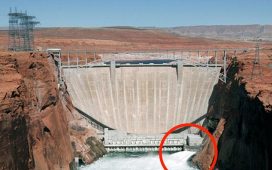United, Delta and American Airlines are taking steps to cover cameras on seat backs after the practice sparked a privacy backlash.
Many consumers were outraged when they learned of the controversial cameras embedded within the entertainment systems of plane seats.
It even sparked an inquiry from two US senators who demanded to know what the cameras were being used for and if they were recording unsuspecting passengers.
Scroll down for video

Delta, United and American Airlines are covering the cameras on seat backs after recent criticisms around privacy. Pictured is a seat back camera on a Singapore Airlines flight
Now, the airlines say they intend to cover up the cameras in response to recent criticism.
United Airlines said it has already covered all the seat back cameras on its planes.
‘As with many other airlines, some of our premium seats have in-flight entertainment systems that came with cameras installed by the manufacturer,’ a United spokesperson told BuzzFeed News.
‘None of these cameras were ever activated and we had no plans to use them in the future, however we took the additional step to cover the cameras.
‘The cameras are a standard feature that manufacturers of the system included for possible future purposes such as video conferencing,’ the spokesperson added.

Some American Airlines aircraft have cameras in their newer seat-back entertainment systems. The company said the cameras weren’t turned on and that it will cover them

Stickers have since been spotted covering United’s seat back cameras.
The company said it will install the covers on any premium seats added to airplanes.
A Delta spokesperson told BuzzFeed that it also plans to cover the cameras in order to ‘reassure’ customers and said it doesn’t plan use them.
An American Airlines spokesperson also said its cameras weren’t turned on and that it will install covers on the cameras.
Much of the debate about the seat back cameras was sparked after a traveler posted a tweet questioning a tiny lens spotted on the back of a seat of a Singapore Airlines jet.
‘Just found this interesting sensor looking at me from the seat back on board of Singapore Airlines,’ user Vitaly Kamluk tweeted.
‘Any expert opinion of whether this is a camera? Perhaps @SingaporeAir could clarify how it is used?’
In response, Singapore Airlines’ official Twitter account said the cameras were never turned on and were installed by the original manufacturer.

Larger screens are used in premium passenger classes on Delta flights and all of them come with embedded cameras. The company has since said it will cover up the cameras
Some of the in-flight entertainment systems appear to have been manufactured by Panasonic Avionics, according to Digital Trends.
Panasonic Avionics counts American Airlines, Emirates and Japan Airlines as companies that use the systems, among others.
‘Panasonic Avionics takes airline passenger privacy very seriously,’ the company told Digital Trends.
‘While the company does include cameras as part of its in-flight entertainment (IFE) systems, at no time have these cameras been activated or used in any manner by either Panasonic Avionics or its customers.
‘The cameras have simply been included to support potential future applications like seat-to-seat video conferencing,’ the company added.
The controversy surrounding the seat back cameras was enough to attract the attention of US senators Jeff Merkley and John Kennedy, who sent a joint letter to eight US carriers seeking more information about the cameras.
Delta Air Lines, Southwest, Frontier, United Airlines, Spirit, American Airlines, Jet Blue and Alaska Air are among those addressed in the letter.
‘The last thing passengers need to worry about is the idea that airlines or hackers may be spying on them while they eat their pretzels,’ Merkley told CNN.
‘It’s time to protect Americans’ privacy and get rid of hidden cameras and microphones on airplanes.’
It comes as airports and airlines have increasingly come under fire for their use of facial recognition at security checkpoints.















